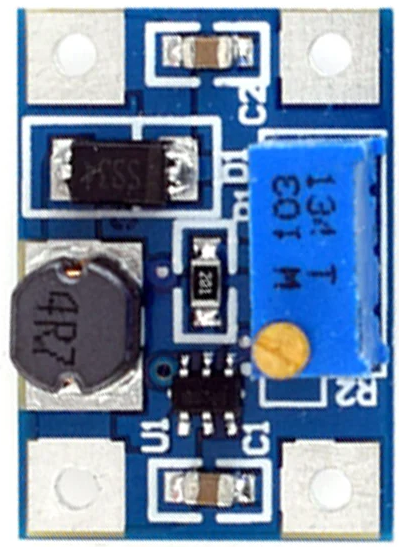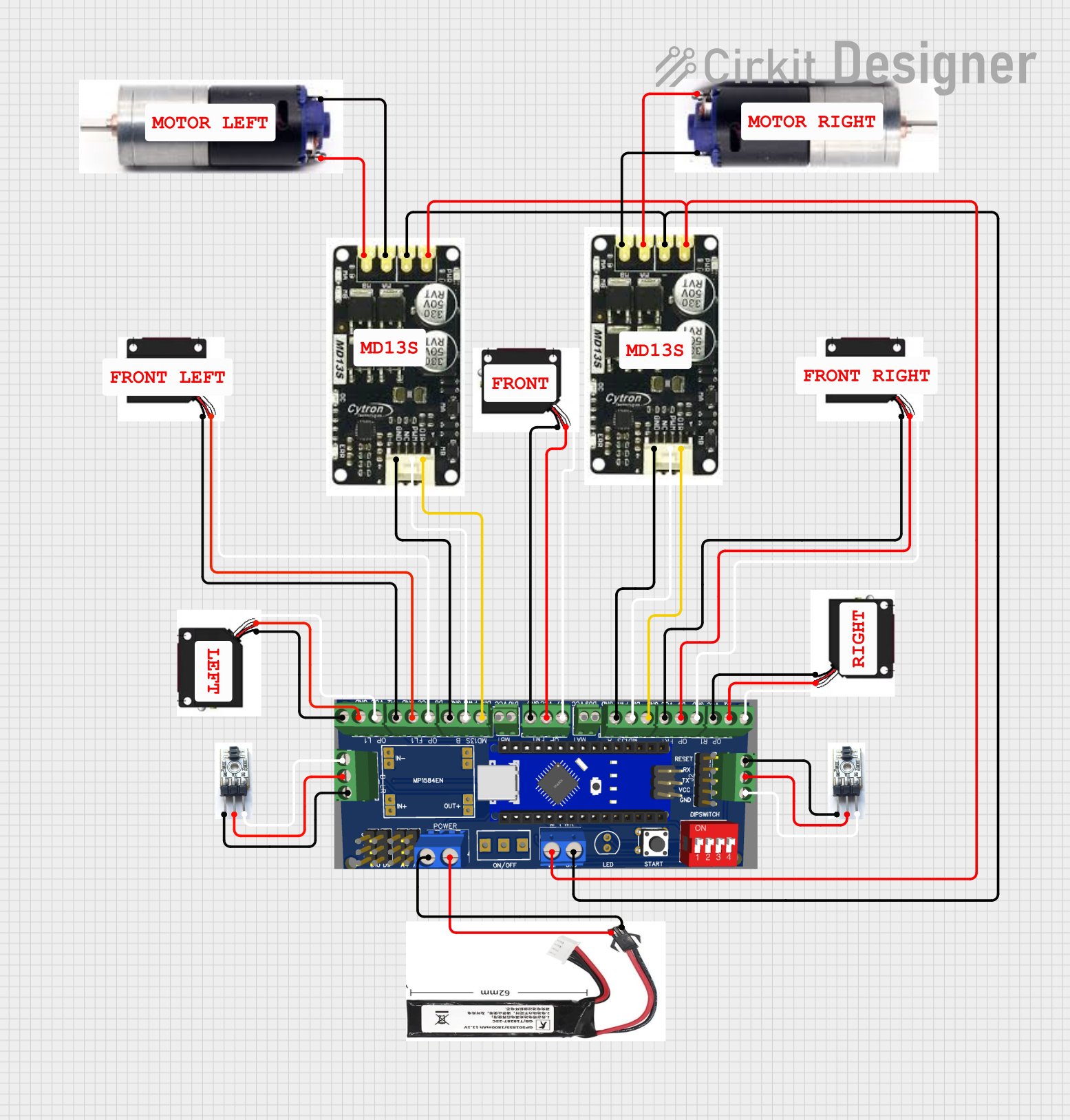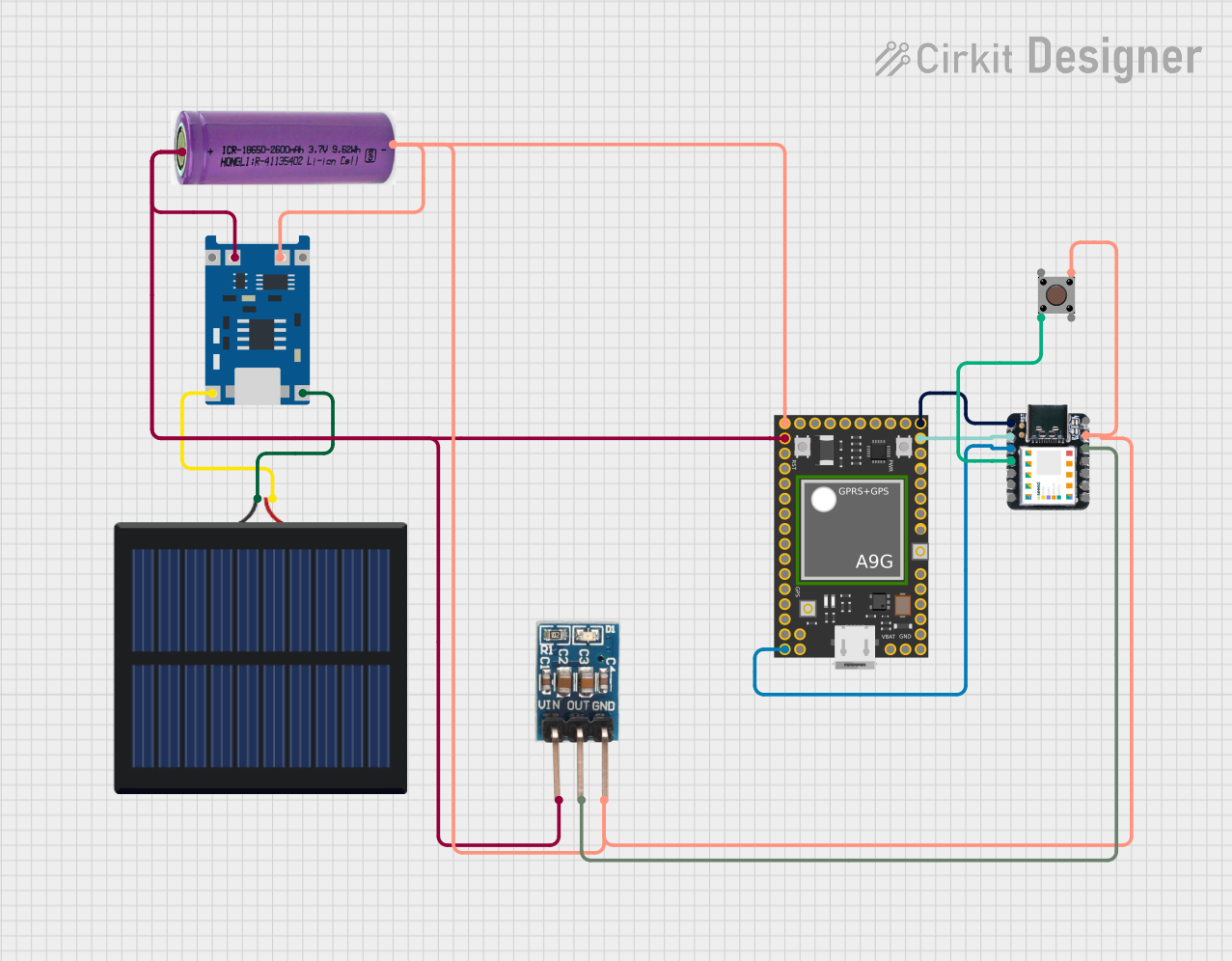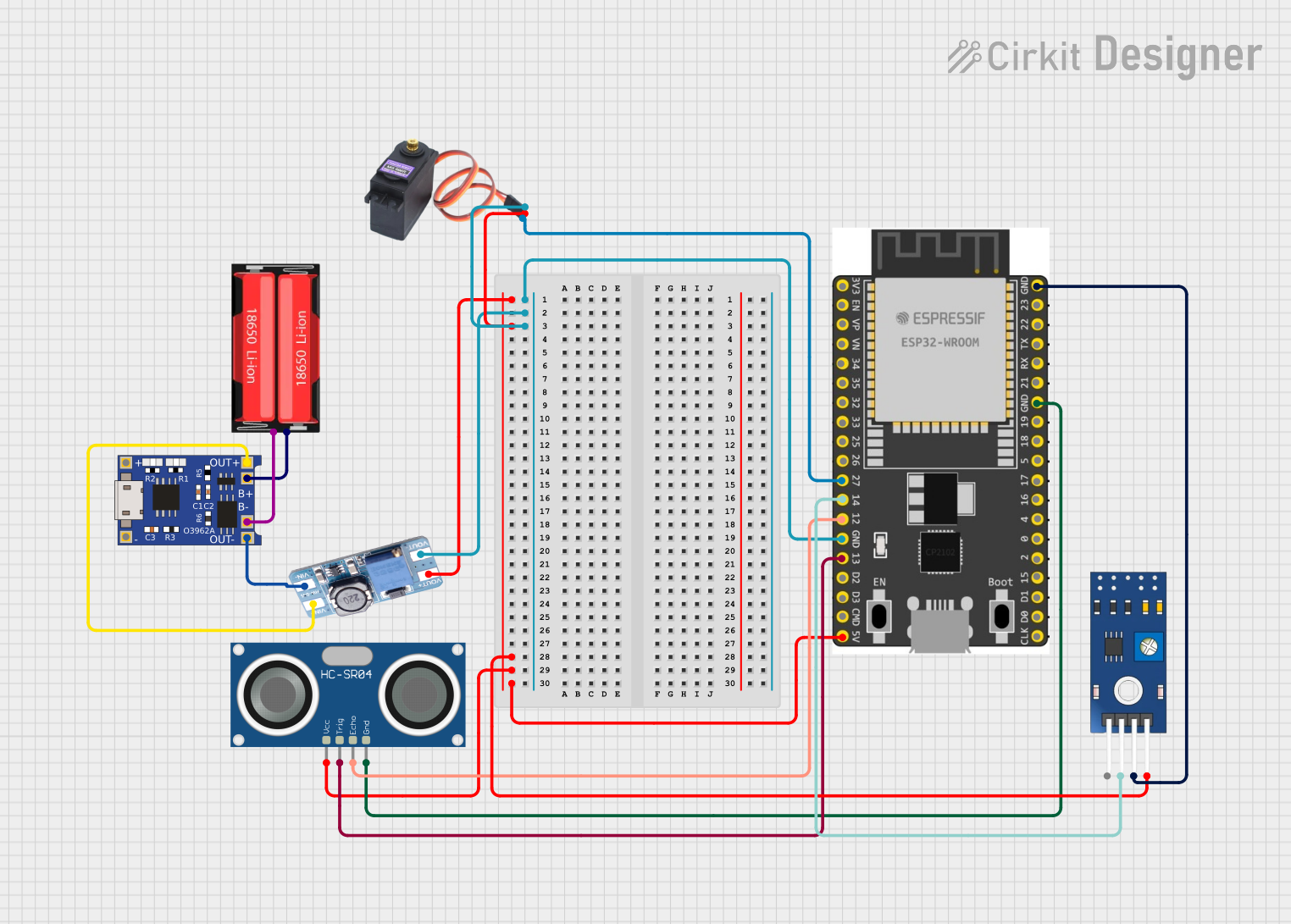
How to Use SX1308: Examples, Pinouts, and Specs

 Design with SX1308 in Cirkit Designer
Design with SX1308 in Cirkit DesignerIntroduction
The SX1308 is a highly integrated LoRaWAN gateway chip designed for long-range, low-power wireless communication. It is a key component in building LoRaWAN gateways, enabling communication between end devices and network servers. The SX1308 supports multiple channels and can handle a large number of simultaneous connections, making it ideal for Internet of Things (IoT) applications. Its robust design ensures reliable performance in industrial, agricultural, and smart city deployments.
Explore Projects Built with SX1308

 Open Project in Cirkit Designer
Open Project in Cirkit Designer
 Open Project in Cirkit Designer
Open Project in Cirkit Designer
 Open Project in Cirkit Designer
Open Project in Cirkit Designer
 Open Project in Cirkit Designer
Open Project in Cirkit DesignerExplore Projects Built with SX1308

 Open Project in Cirkit Designer
Open Project in Cirkit Designer
 Open Project in Cirkit Designer
Open Project in Cirkit Designer
 Open Project in Cirkit Designer
Open Project in Cirkit Designer
 Open Project in Cirkit Designer
Open Project in Cirkit DesignerCommon Applications and Use Cases
- LoRaWAN gateways for IoT networks
- Smart agriculture and environmental monitoring
- Industrial automation and control systems
- Smart cities (e.g., parking sensors, street lighting)
- Asset tracking and logistics
Technical Specifications
The SX1308 is designed to meet the demanding requirements of LoRaWAN gateways. Below are its key technical specifications:
Key Features
- Frequency Bands: 868 MHz (EU), 915 MHz (US), and other ISM bands
- Number of Channels: Up to 8 uplink and 1 downlink channel
- Modulation: LoRa and FSK
- Sensitivity: Down to -137 dBm
- Maximum Output Power: +27 dBm
- Operating Voltage: 3.3V
- Power Consumption: Low power consumption in operation and standby modes
- Temperature Range: -40°C to +85°C
- Interface: SPI for communication with host processors
Pin Configuration and Descriptions
The SX1308 is typically available in a QFN package. Below is the pin configuration and description:
| Pin Number | Pin Name | Description |
|---|---|---|
| 1 | VDD | Power supply input (3.3V) |
| 2 | GND | Ground |
| 3 | RESET | Reset input (active low) |
| 4 | SPI_MISO | SPI Master-In-Slave-Out |
| 5 | SPI_MOSI | SPI Master-Out-Slave-In |
| 6 | SPI_SCK | SPI Clock |
| 7 | SPI_CS | SPI Chip Select (active low) |
| 8 | TX_ENABLE | Transmit enable control |
| 9 | RX_ENABLE | Receive enable control |
| 10 | ANT_SW | Antenna switch control |
| 11 | GPIO1 | General-purpose I/O |
| 12 | GPIO2 | General-purpose I/O |
Usage Instructions
The SX1308 is typically used in conjunction with a host microcontroller or processor to implement a LoRaWAN gateway. Below are the steps and considerations for using the SX1308 in a circuit:
Circuit Integration
- Power Supply: Connect the VDD pin to a stable 3.3V power source and GND to ground.
- SPI Communication: Connect the SPI pins (MISO, MOSI, SCK, CS) to the corresponding SPI pins on the host microcontroller.
- Reset: Use the RESET pin to initialize the SX1308. Pull it low momentarily to reset the chip.
- Antenna Connection: Use the ANT_SW pin to control the antenna switch for transmit and receive operations.
- GPIOs: Configure GPIO1 and GPIO2 as needed for additional control or status signaling.
Important Considerations
- Antenna Design: Ensure proper impedance matching for the antenna to maximize range and minimize losses.
- Power Supply Decoupling: Use decoupling capacitors near the VDD pin to ensure stable operation.
- Thermal Management: If operating at high power levels, ensure adequate heat dissipation to prevent overheating.
- Firmware: The SX1308 requires firmware on the host processor to handle LoRaWAN protocol operations.
Example Code for Arduino UNO
Below is an example of how to interface the SX1308 with an Arduino UNO using SPI:
#include <SPI.h>
// Define SX1308 SPI pins
#define SX1308_CS 10 // Chip Select pin
#define SX1308_RESET 9 // Reset pin
void setup() {
// Initialize SPI communication
SPI.begin();
// Configure SX1308 control pins
pinMode(SX1308_CS, OUTPUT);
pinMode(SX1308_RESET, OUTPUT);
// Reset the SX1308
digitalWrite(SX1308_RESET, LOW); // Pull RESET low
delay(10); // Wait for 10ms
digitalWrite(SX1308_RESET, HIGH); // Release RESET
// Initialize SX1308
digitalWrite(SX1308_CS, HIGH); // Deselect the chip
Serial.begin(9600);
Serial.println("SX1308 Initialized");
}
void loop() {
// Example: Send a command to the SX1308
digitalWrite(SX1308_CS, LOW); // Select the chip
SPI.transfer(0x01); // Send a dummy command
digitalWrite(SX1308_CS, HIGH); // Deselect the chip
delay(1000); // Wait for 1 second
}
Notes:
- Replace the dummy command (
0x01) with actual commands based on the SX1308 datasheet. - Ensure the SPI clock speed is compatible with the SX1308.
Troubleshooting and FAQs
Common Issues
No Communication with the SX1308
- Cause: Incorrect SPI connections or configuration.
- Solution: Verify the SPI wiring and ensure the SPI clock speed is within the supported range.
Poor Signal Range
- Cause: Improper antenna design or placement.
- Solution: Use a properly tuned antenna and ensure it is placed away from interference sources.
Overheating
- Cause: High power output without proper heat dissipation.
- Solution: Add a heatsink or improve ventilation around the chip.
Reset Not Working
- Cause: Incorrect handling of the RESET pin.
- Solution: Ensure the RESET pin is pulled low for at least 10ms during initialization.
FAQs
Can the SX1308 operate on 5V?
- No, the SX1308 requires a 3.3V power supply. Using 5V may damage the chip.
What is the maximum range of the SX1308?
- The range depends on factors like antenna design, environment, and power output. Typically, it can achieve up to 15 km in open areas.
Does the SX1308 support FSK modulation?
- Yes, the SX1308 supports both LoRa and FSK modulation.
Can I use the SX1308 with an Arduino?
- Yes, the SX1308 can be interfaced with an Arduino using SPI. However, additional firmware is required to handle LoRaWAN protocol operations.
By following this documentation, users can effectively integrate and troubleshoot the SX1308 in their LoRaWAN gateway designs.